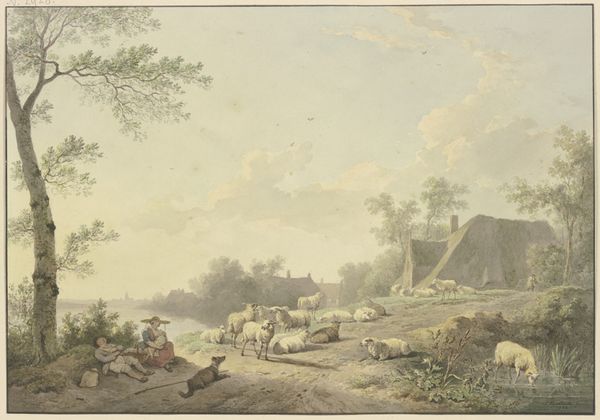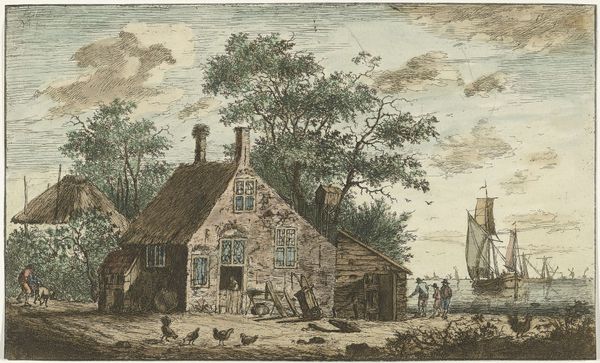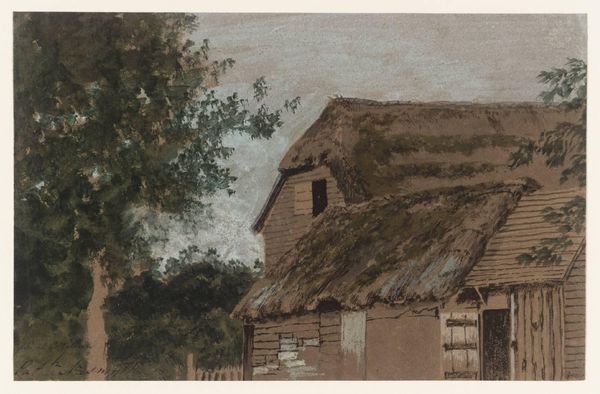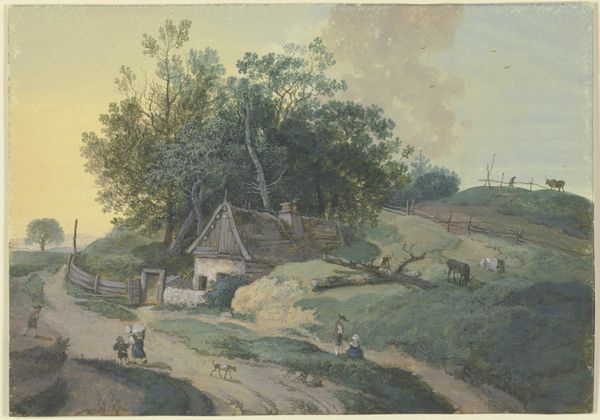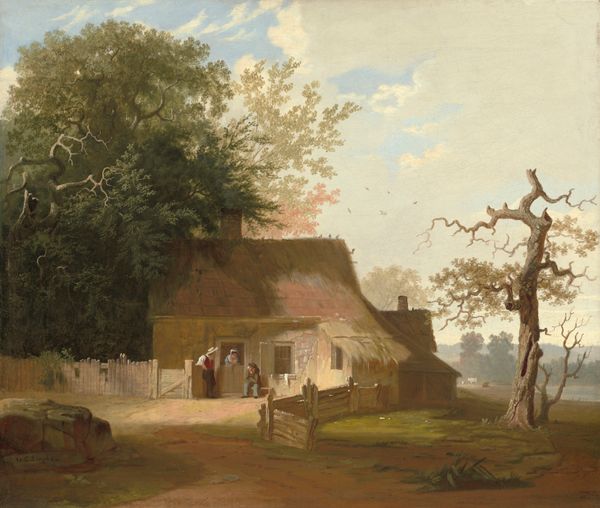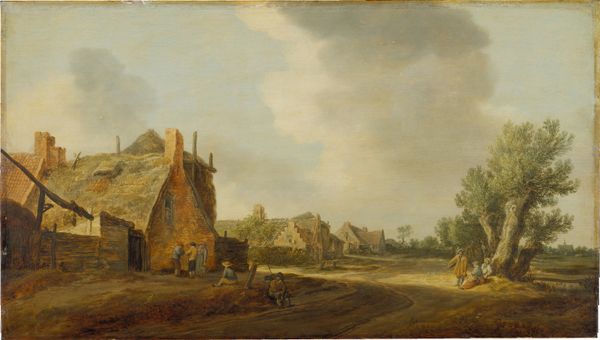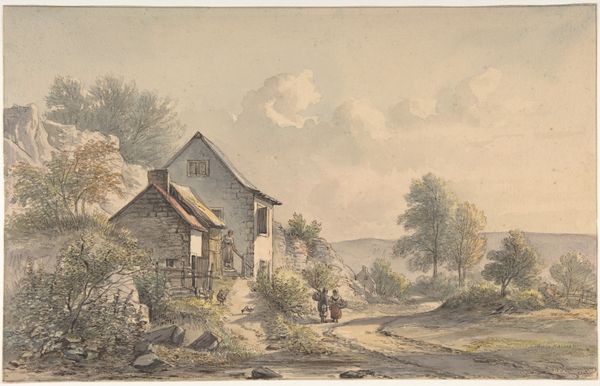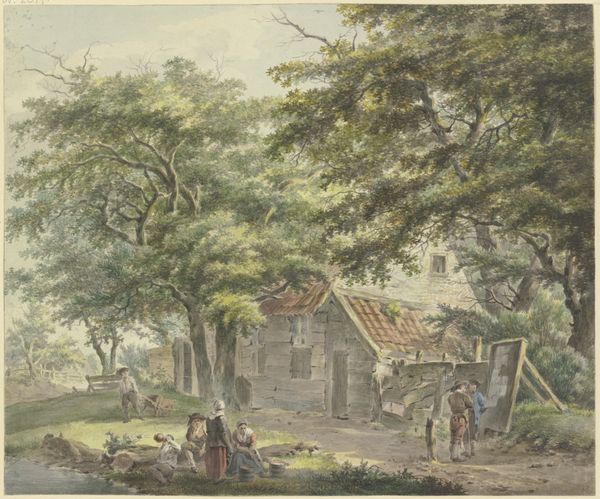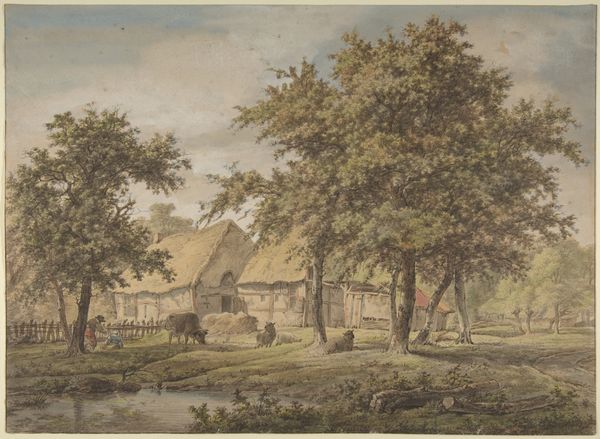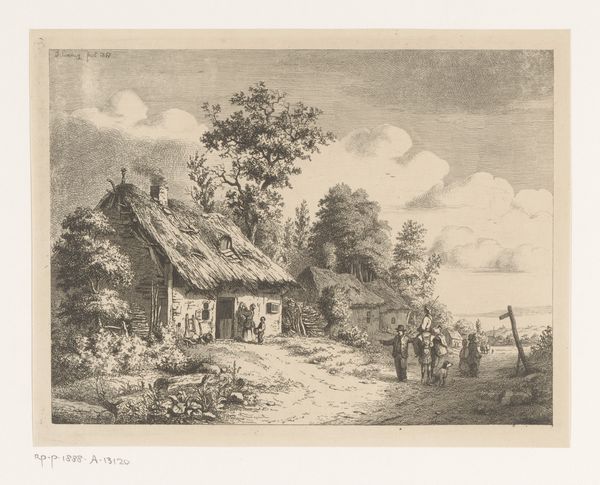
watercolor, pencil
#
water colours
#
pencil sketch
#
landscape
#
watercolor
#
coloured pencil
#
pencil
#
watercolour illustration
#
history-painting
#
watercolor
Dimensions: height 396 mm, width 518 mm
Copyright: Rijks Museum: Open Domain
Curator: Welcome. We’re looking at "Fight at an Inn or House with a Thatched Roof on a Hill" by Josephus Augustus Knip, created sometime between 1831 and 1847. It's primarily watercolor, with elements of pencil and coloured pencil work. Editor: This looks like something straight out of a dream. Or perhaps a very vivid memory. There’s a beautiful softness, but the scene itself—that house besieged!—is fraught with anxiety. Curator: Indeed. The composition invites a deep reading. Notice how the eye is led from the serene background—that town nestled in the distance with its towering spire—to the chaos erupting around the thatched cottage. Editor: That juxtaposition, yes! It's unsettling, almost theatrical. You’ve got this rustic idyll invaded by... Well, who are they? Soldiers? Bandits? They’re just these small, shadowy figures enacting some drama we’re only glimpsing. It’s like a stage play where we missed the first act. Curator: Exactly. Consider how Knip uses the muted palette—greys, blues, ochres—to underscore the somber mood. It reflects a period where Romanticism’s emphasis on emotion intersected with the emerging genre of history painting. The figures themselves, while small, possess a dynamism; they push and pull the viewer into the heart of the conflict. Semiotically, the thatched roof can be seen as representing rural vulnerability against the encroachment of larger social forces. Editor: Or just a cozy place under attack. Maybe I'm just simple, but I see the tension between the idyllic and the violent playing out so personally. You almost feel responsible, like you should warn them, even though it’s long gone. Curator: That personal engagement speaks to Knip’s skill, though. He manages to embed broader themes into a very intimate scale. Editor: And what's so strange to me is how timeless the work feels even if we understand the context; this exact feeling will resonate every time humanity attacks a home, literally or metaphorically. The material reality of violence set against a calm horizon… it’s tragically current. Curator: I think that provides us with a rich entry point, offering much to think about beyond just formal analysis. Editor: Right! I could gaze at it all day and come up with 100 different narratives and never quite grasp the truth in this little painting. And that, in my mind, is its true beauty.
Comments
No comments
Be the first to comment and join the conversation on the ultimate creative platform.


